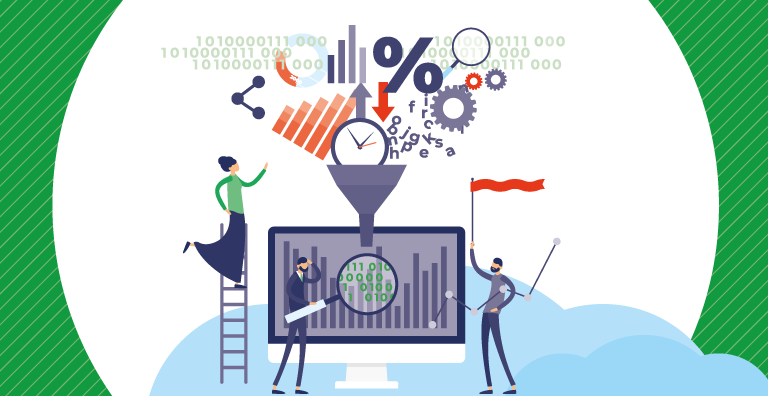Digitization and data mining
How does it work in practice?
The sequence of digitization and extraction steps has a clear order and rules, it looks like this:
SCAN – OCR + VALIDATION – EXCEPTIONS – WORKFLOW – REPORTING – PORTAL for suppliers
In the following text we will present the process in more detail …
The scanning process:
1) An unqualified person takes a pile of invoices (approx. 100 pages)
2) Sticks a barcode on it (on the whole pile, not individually)
3) Puts the pile onto the scanner
4) The scanner digitizes the pile, scans the front and back parts of the invoice, sharpens the image, creates an invoice image in PDF
5) The system sends the document to SAP (image only)
6) “OCR – optical character recognition” takes place within SAP
the system scans the image and finds the text; another algorithm traverses the page – AI (Artificial Intelligence) finds keywords e.g. VAT – transfers this information to the correct field in SAP (the system recognizes the structured information) and converts it to a SAP format.
The validation process:
1) The correctness of the extraction process is validated automatically by a set of preset rules that are set during the system implementation phase
2) The accountant only checks whether it is “extracted” correctly (by clicking on/agreeing with the correct extraction of the items, the program also learns (e.g. if a third invoice comes from the supplier, the % of error free extraction increases)
If the process is set up correctly, accountants do not have to touch the records (only 5-10% of the time), giving 50% of their time for more important professional activity (than the administration work associated with manual overwriting invoices or circulating paper invoices to colleagues in the approval process) .
The validation process also includes an exception process.
The exception process:
The following checks are carried out in this stage:
Was it a legitimate invoice?
Is it a duplicate invoice?
Is the invoicing center correct?
The functioning of this system is conditioned by setting up the order process (interconnection of the “order – invoice – delivery” process). The system asks, is there an order? Does the amount agree? It then loads the items from the order (into the invoice).
Workflow
Part of the approval logic is who approves the invoice up to what amount (e.g. if the invoice is up to one million CZK, it is approved by one person, if it is over one million, it is approved by two people, etc.)
When the system finds a problem, it will send the task to a responsible person (as well as the invoice, which is delayed in the approval process) under pre-set scenarios.
Reporting
The benefit of reporting is that the system provides notification of a problem group of invoices or suppliers, which leads to optimization of the process by searching for weak points in the system.
This part of the process will be appreciated especially by the managers of the accounting department, it can be used to check the work of accountants, save on personnel costs, the software does not give an error rate (compared to the human factor).
Portal for suppliers
This is serves as a self-service for information about the stage of a particular invoice (without the need to contact the business partner by telephone).
Benefits of the solution:
1) Cost savings of 50% of the accounting department’s time spent on administrative tasks (e.g. rewriting invoices into the system)
2) Reduced error rate
3) Elimination of the circulation to colleagues around the company for approval
4) Very rapid return on investment for companies with a large number of documents
5) The accounting department can be run “on-line” from anywhere in any situation
For more information, please contact us at sales@ixtent.com

